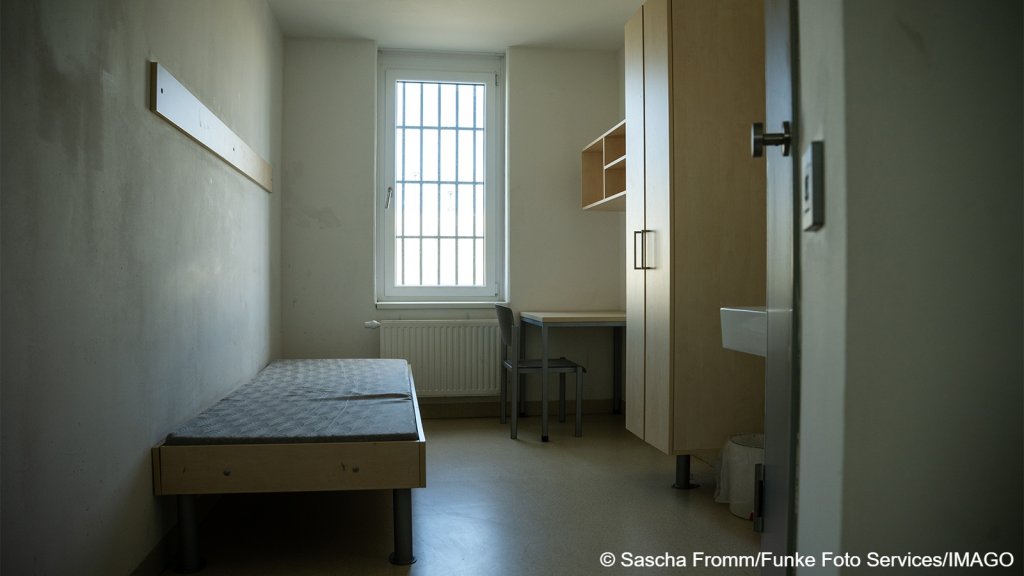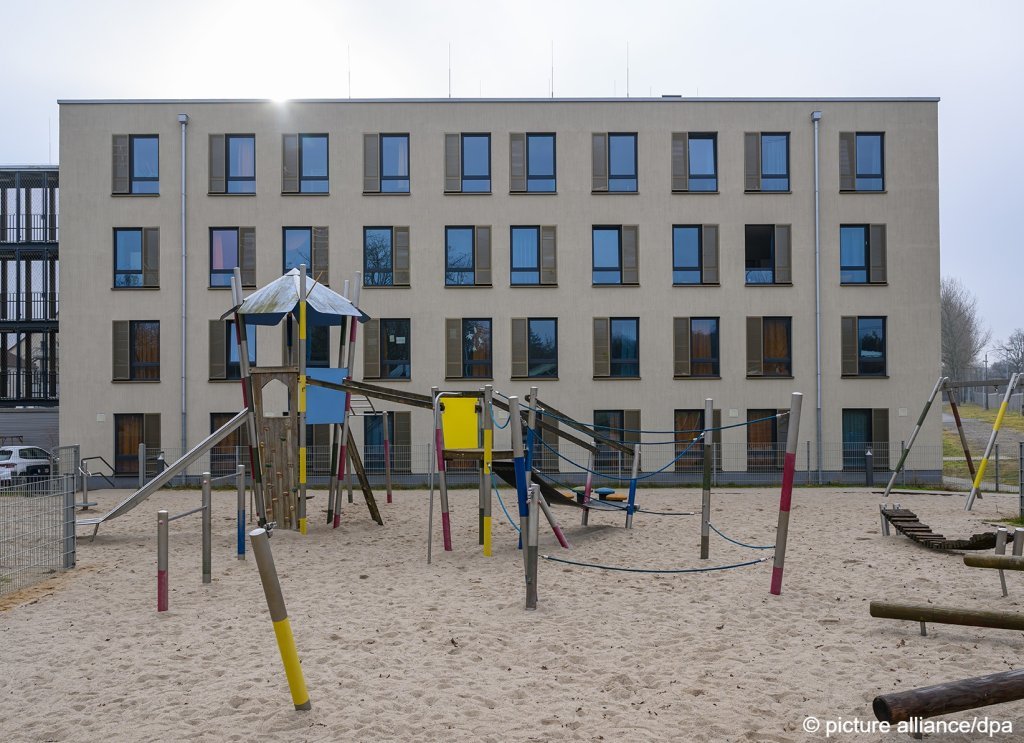Germany’s federal state of Thuringia is planning to open a detention center for deportees in the small town of Arnstadt. This comes after three other detention facilities were launched across Germany earlier in the year.
The detention facility is expected to host up to 37 rejected asylum seekers prior to their deportation — if it can be sufficiently staffed.
But initially, the facility is projected to host only two people upon its planned opening date of August 11.
Before that, the detention center will launch a trial run to test various work flows for the duration of one week as of July 31.

If everything goes according to plan during this trial week, the first set of deportees are expected to be sent there in the first half of August.
The Arnstadt center is considered to be a small facility, which does not offer any facilities to host families but only individual failed asylum seekers.
It is uncertain whether it can cater to both male and female deportees.
Two detention centers in east Germany
The facility in Arnstadt is the latest in a series of deportation centers opening across Germany as part of the ongoing policy of limiting the number of irregular migrants in Germany who have no right or prospect to remain.
Most recently on March 1, another deportation detention center was opened in Eisenhüttenstadt, located in the eastern federal state of Brandenburg, which is close to the Polish border.

This facility operates under the stipulations of the EU's Dublin Regulation, which means only deportees to other EU countries will be held there. Most of those who end up in Eisenhüttenstadt are due to be returned to nearby neighbors, like Poland.
In nearly all instances, deportees to other EU countries are sent back to the country where they first lodged an asylum application in the EU before moving on to Germany to apply for asylum again.
Unlike the center in Arnstadt, the Eisenhüttenstadt facility has two different buildings, one for women and families and the other solely for men.
It is also designed to be much bigger, with a capacity to house roughly 250 people, according to the KNA news agency, as Germany hopes to increase the number of deportations to other EU nations.
Read AlsoGermany expands Dublin deportation centers
Two more detention centers in north Germany
Earlier in the year, two other Dublin deportation detention centers were opened in northern Germany, located in the major cities of Hamburg and Bremen, respectively. Plans for another at Munich airport in southern Germany was also announced across the media. According to reports in the British press, the facility there is planned to be at least two storeys high.
Bavarian state authorities already operate regular deportation flights to destinations across Europe and sometimes further afield, to African countries like Guinea, Nigeria and Ghana. According to press statements issued by Bavaria's state immigration authorities LFAR Bayern, often these flights contain a mixture of failed asylum seekers, and sometimes also those convicted of crimes within Germany. Some are flown back to their home countries, and others are deported to the first EU country of entry, where they are already registered.
This growing network of deportation facilities serves two main practical purposes: one is to ensure that failed asylum seekers who are likely to abscond from their planned deportation can be held there prior to their expulsion from Germany.
The other reason is to streamline all administrative and logistic issues related to deportations in one place.
The basic premise under which the Dublin detention centers operate is to hold failed asylum seekers for two weeks prior to their deportation.
During this time, they do not receive any financial help at all but are only fed, clothed and sheltered.
The idea behind this is to reduce incentives to irregular migration into Germany, making sure that deportees do not get to take cash back with them from the last days they spend in the country.
Read AlsoThe European Commission to propose stricter enforcement of deportation policies
Only 1 in 15 Dublin cases successfully deported
Germany continues to witness a high number of people who apply for asylum despite having lodged an earlier application in another EU country already.
In 2024, the German government submitted close to 75,000 requests to transfer such asylum seekers to other EU countries.
About 44,000 of those requests were approved, but only around 5,740 individuals were actually deported in the end.
This means that roughly only 1 in 15 deportation cases actually were carried out in the past, with many eventually gaining the right to remain in Germany while having their asylum applications assessed there.

Read AlsoGermany: Merz pushes for tougher border policies after election win
Stopping asylum seekers at the border
In order to get a grip on this situation, Germany's new government has decided to significantly increase border checks at all of its land borders in a bid to intercept people who are entering Germany to lodge an asylum claim.
The reasoning behind this, states the government, is the fact that Germany is surrounded exclusively by safe countries, nearly all of which are full members of the European Union or close associates, such as Switzerland.
The government believes that no one should have to come all the way to Germany to apply for asylum, as they will inadvertently pass through at least one other safe country where they can apply first.

There's also the issue of people deported under the Dublin agreement who sneak back into Germany to apply for asylum once again.
Under current legislation, a new case has to be opened each time a person files a fresh asylum claim in Germany — even if they have failed their case before.
The government is considering introducing changes to this procedure, as it eats away at too many resources, thinks the government, at the taxpayer's expense.
The Interior Ministry hopes that the additional border checks will also help in stopping such return asylum applicants and make Germany less attractive to irregular migrants overall.
Read AlsoThousands of deported migrants reenter Germany — report
